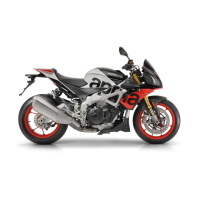
Do you have a question about the PIAGGIO Aprilia Tuono V4 1100 RR and is the answer not in the manual?
| Tires Front | 120/70 ZR 17 |
|---|---|
| Seat Height | 825 mm |
| Dry Weight | 184 kg |
| Power | 175 HP |
| Torque | 121 Nm |
| Transmission | 6-speed |
| Frame | Aluminum dual beam |
| Fuel Capacity | 18.5 liters |
| Engine Type | Aprilia 4-longitudinal 65° V4, 4-strokes, liquid cooled, double overhead camshaft (DOHC), four valves per cylinder |
| Rear Brakes | Single 220mm disc, Brembo caliper |
| Tires Rear | 190/55 ZR17 |
Introduction to the manual's purpose and the importance of reading it.
Guidance on cleaning and maintaining the motorcycle's exterior, including specific parts.
Precautions regarding engine exhaust fumes and the need for proper ventilation.
Safety guidelines for handling flammable fuel and avoiding ignition sources.
Caution about touching hot engine and exhaust system parts after operation.
Information on coolant properties, handling, and potential hazards.
Advisories for handling engine and gearbox oil, including protective measures.
Warnings about brake and clutch fluid's harmful effects and eye safety.
Precautions for handling battery electrolyte due to its toxic and corrosive nature.
Instructions on using the side stand correctly and avoiding weight on it.
Guidance on not removing components and reporting potential faults.
Overview of the a-PRC system and its integrated control functions.
Diagrams and keys identifying the major parts of the motorcycle.
Introduction to the dashboard layout, controls, and digital instrument panel.
Details on the LCD display's features, including twilight sensor and display modes.
Information on dashboard alarms, service warnings, and urgent service notifications.
Explanation of the available engine maps and how to select them.
Guide to using control buttons for trip logs and other functions.
Accessing and navigating the advanced functions menu for system configuration.
Detailed settings for ABS, ATC, AWC, ALC, and AQS within the aPRC system.
Explanation of the ignition switch positions and their functions, including steering lock.
Operation of switches for indicators, beams, start-up, and engine stop.
Detailed guide on using the cruise control and Aprilia Wheelie Control systems.
Information on the V4-MP system for interacting with connected external devices.
Activation and function of the PIT button for limiting speed in pit lanes.
Explanation of the Anti-lock Braking System (ABS) and its cornering capabilities.
Overview of a-PRC systems: Traction Control, Wheelie Control, Launch Control, Quick Shift.
How the electronic immobilizer system prevents theft and its operation with keys.
Instructions for removing the passenger and rider seats for access.
Location and importance of frame and engine numbers for identification and parts.
Essential checks to perform before riding the motorcycle for safety and proper operation.
Step-by-step guide on how to refuel the motorcycle safely and correctly.
How to adjust rear shock absorber settings for rebound, compression, and spring preload.
Guidance on adjusting front fork settings for rebound, compression, and spring preload.
How to adjust the clutch lever play for optimal comfort and function.
Essential guidelines for the initial break-in period to ensure vehicle durability.
Proper steps and safety precautions for starting the motorcycle's engine.
Instructions and cautions for moving off, riding, and handling the motorcycle.
Correct procedure for stopping the motorcycle's engine.
Guidelines for selecting a safe parking spot and securing the vehicle.
Details about the catalytic converter and its function, including heat warnings.
How to extend and use the side stand, including parking safety.
Tips and recommendations for securing the vehicle against theft.
Essential tips for safe motorcycle operation, including rider behavior and conditions.
Fundamental safety recommendations for mounting, dismounting, and general riding.
Procedure for checking engine oil level and topping up, emphasizing warm engine checks.
Information on engine oil changes and filter replacements, requiring dealer service.
Guidelines for checking tyre inflation pressure, wear, and condition.
How to check coolant level and system condition, including warnings about hot coolant.
Procedure for topping up brake fluid, with cautions on spills and fluid properties.
Step-by-step instructions for removing and installing the motorcycle battery.
Instructions on how to charge the motorcycle battery and check its electrolyte level.
Guidance on checking and replacing fuses, including warnings about incorrect fuse usage.
Information on various lamp types and replacement procedures, noting dealer service for some.
How to adjust the headlight beam for correct vertical and horizontal alignment.
Steps for replacing bulbs in front and rear turn indicators.
How to visually inspect brake pads for wear and when to replace them.
Guidelines for cleaning the motorcycle, including precautions for different parts and conditions.
Information on chain clearance, adjustment, and replacement, noting dealer service.
Proper methods for cleaning and lubricating the drive chain, including O-ring care.
Specifications for the motorcycle's length, width, height, wheelbase, and weight.
Details on the engine model, type, capacity, bore/stroke, and idle speed.
Information on fuel tank capacity, engine oil, coolant, seats, and weight limits.
Data on gear ratios, primary drive ratio, and drive chain type.
Specifications for the fuel system and chassis construction.
Details on front and rear suspension types, adjustments, and travel.
Technical data for front and rear brake systems, including disc and caliper details.
Information on tyre models, sizes, and recommended inflation pressures.
Details on spark plugs, electrode gap, battery, coils, alternator, and fuses.
List of bulbs used in the motorcycle and specifications for indicator lamps.
Comprehensive table outlining service intervals for checks, adjustments, and replacements.
List of recommended products, including engine oil, grease, and brake fluid, with specifications.

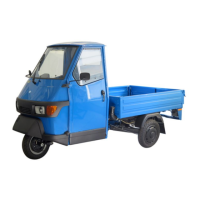

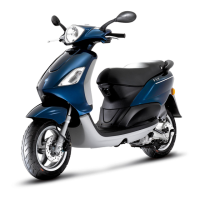
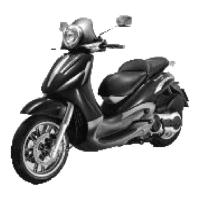
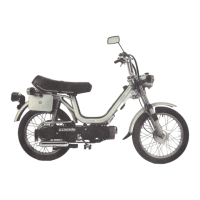
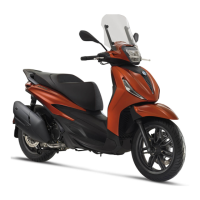
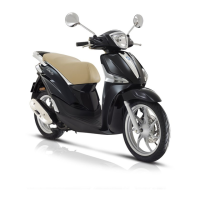

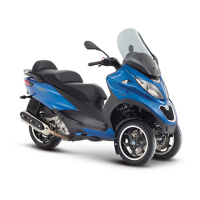
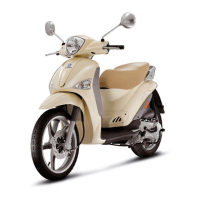
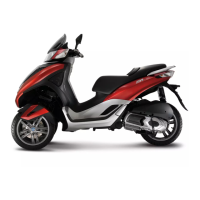
